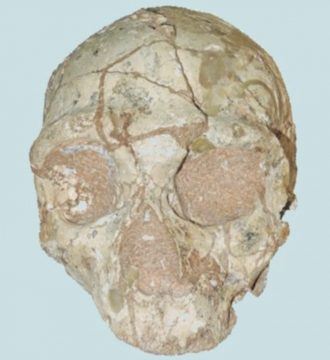Ed Yong in The Atlantic:
 In 1978, in a cave called Apidima at the southern end of Greece, a group of anthropologists found a pair of human-like skulls. One had a face, but was badly distorted; the other was just the left half of a braincase. Researchers guessed that they might be Neanderthals, or perhaps another ancient hominin. And since they were entombed together, in a block of stone no bigger than a microwave, “it was always assumed that they were the same [species] and came from the same time period,” says Katerina Harvati from Eberhard Karls University of Tübingen.
In 1978, in a cave called Apidima at the southern end of Greece, a group of anthropologists found a pair of human-like skulls. One had a face, but was badly distorted; the other was just the left half of a braincase. Researchers guessed that they might be Neanderthals, or perhaps another ancient hominin. And since they were entombed together, in a block of stone no bigger than a microwave, “it was always assumed that they were the same [species] and came from the same time period,” says Katerina Harvati from Eberhard Karls University of Tübingen.
That’s wrong. By thoroughly analyzing both skulls using modern techniques, Harvati and her colleagues have shown that they are very different, in both age and identity.
The one with the face, known as Apidima 2, is a 170,000-year-old Neanderthal—no surprises there. But the other, Apidima 1, was one of us—a 210,000-year-old modern human. And if the team is right about that, the partial skull is the oldest specimen of Homo sapiens outside Africa, handily beating the previous record holder, a jawbone from Israel’s Misliya Cave that’s about 180,000 years old.
More here.
